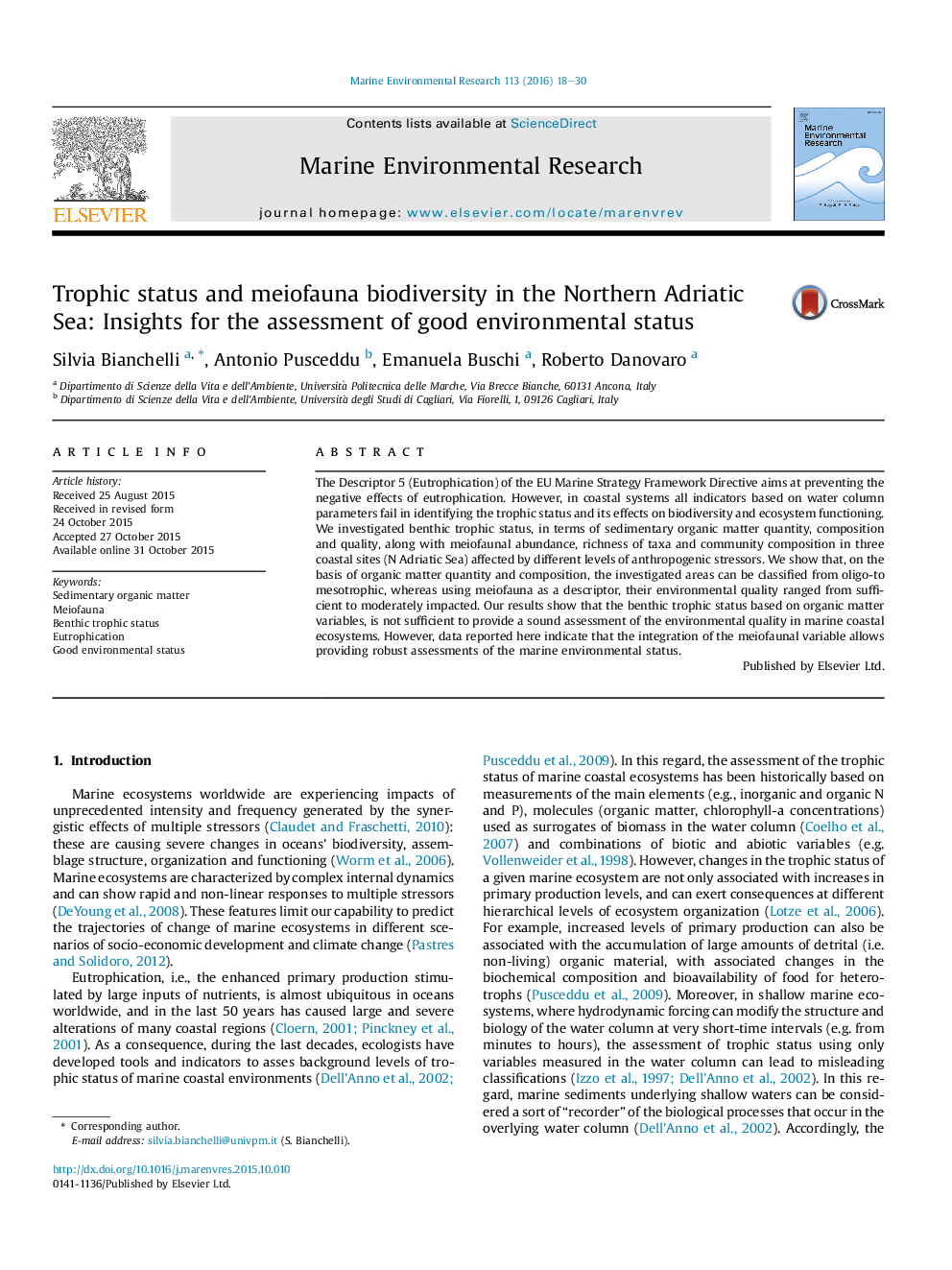| Article ID | Journal | Published Year | Pages | File Type |
|---|---|---|---|---|
| 4550612 | Marine Environmental Research | 2016 | 13 Pages |
•Sedimentary organic matter and meiofauna were investigated in the N Adriatic Sea.•Investigated sediments were found to be from oligo- to mesotrophic.•Environmental quality, based on meiofauna, resulted sufficient-moderately impacted.•Environmental quality is not closely linked to benthic trophic status.•Benthic trophic status cannot be used alone to assess good environmental status.
The Descriptor 5 (Eutrophication) of the EU Marine Strategy Framework Directive aims at preventing the negative effects of eutrophication. However, in coastal systems all indicators based on water column parameters fail in identifying the trophic status and its effects on biodiversity and ecosystem functioning. We investigated benthic trophic status, in terms of sedimentary organic matter quantity, composition and quality, along with meiofaunal abundance, richness of taxa and community composition in three coastal sites (N Adriatic Sea) affected by different levels of anthropogenic stressors. We show that, on the basis of organic matter quantity and composition, the investigated areas can be classified from oligo-to mesotrophic, whereas using meiofauna as a descriptor, their environmental quality ranged from sufficient to moderately impacted. Our results show that the benthic trophic status based on organic matter variables, is not sufficient to provide a sound assessment of the environmental quality in marine coastal ecosystems. However, data reported here indicate that the integration of the meiofaunal variable allows providing robust assessments of the marine environmental status.
